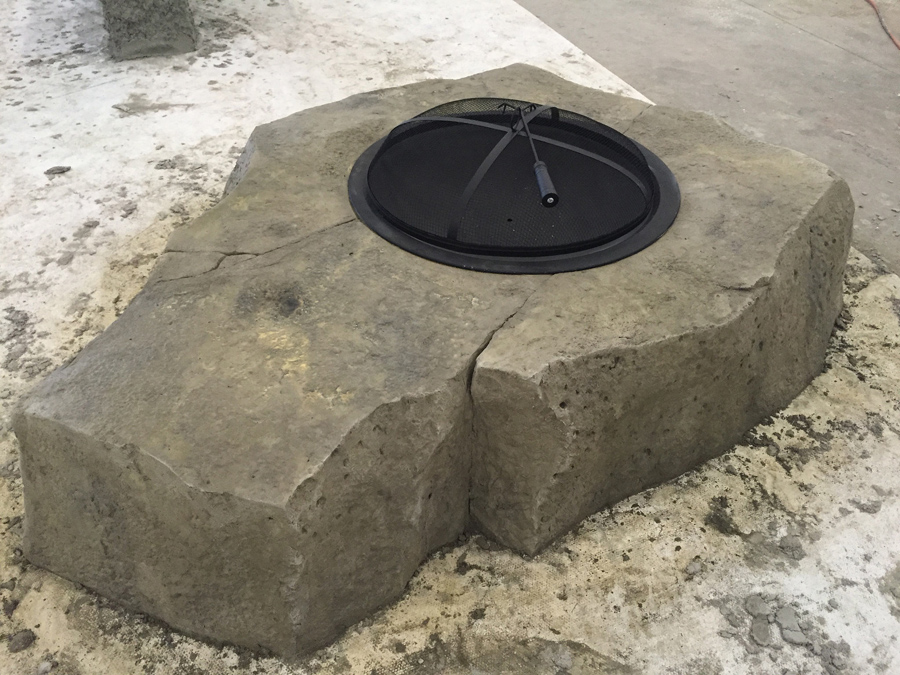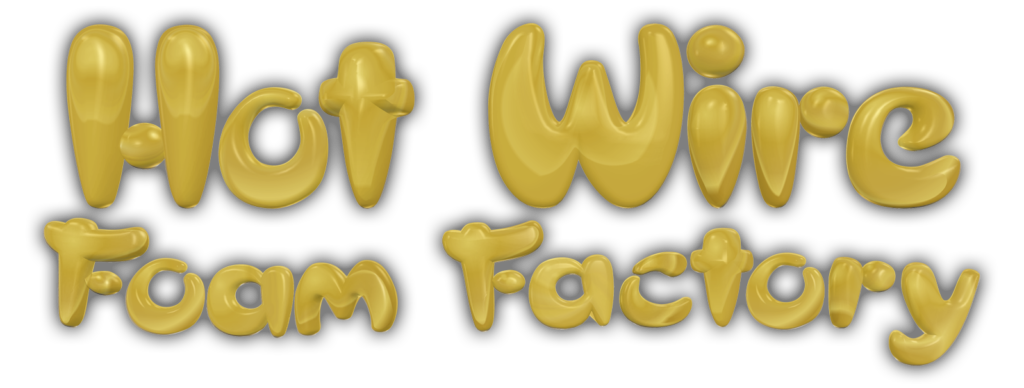Foam Core Construction
What You Need to Start for Vertical Decorative Concrete
By Nathan Giffin of VerticalArtisans.com
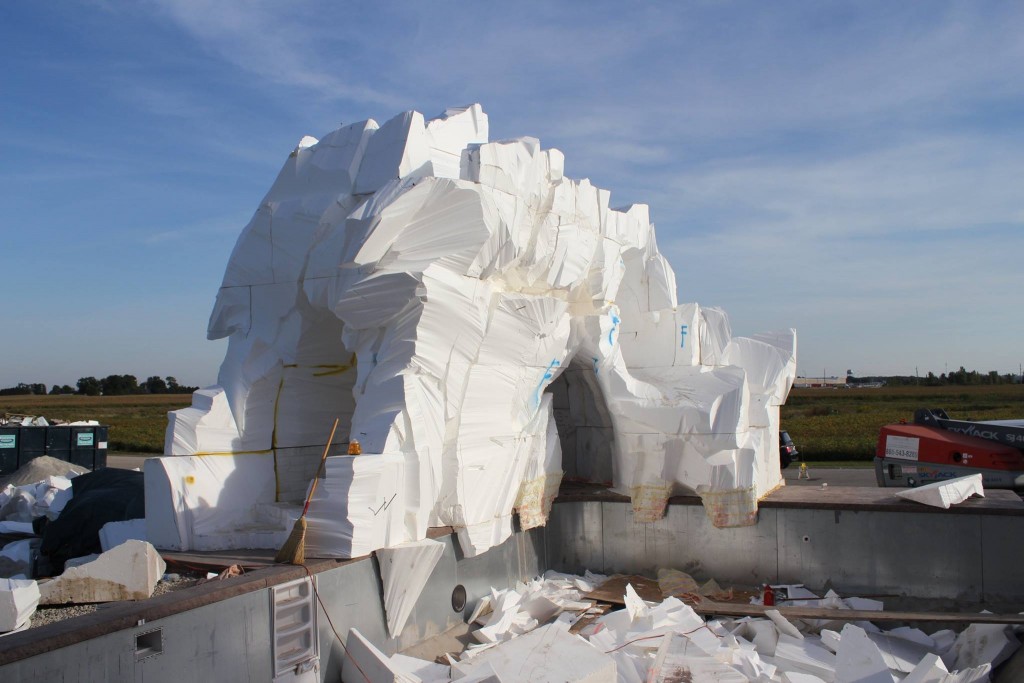

When considering this field or form of construction there are a few things that need to be in place. The tools required to assist you in the production of a foam core project are quite different than most of the tools you may have already purchased.
Let’s start out by defining the types of tools you will need.
Bow Cutters
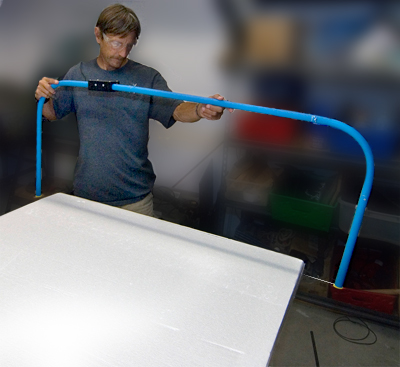
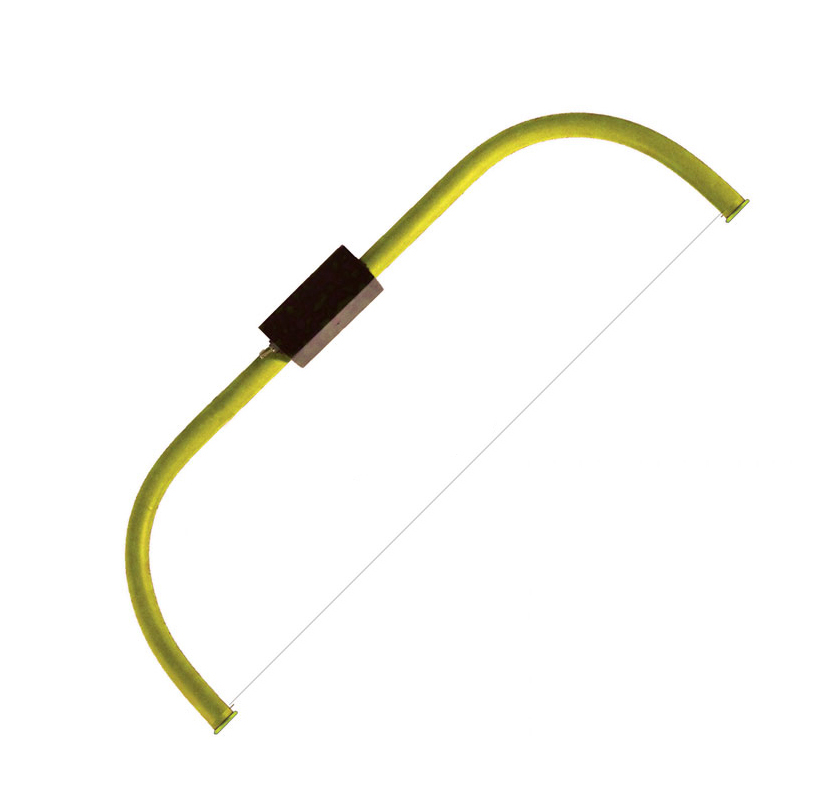
Bow Cutters come in a few sizes. These tools cut through foam very easy and allow the artist to shape the foam by removing the undesired foam. The most popular sizes are the 4-Foot Bow Cutter and the 2-Foot Bow Cutter. Both bows are excellent and are the primary tools to use.
Groovers and Freehand Routers
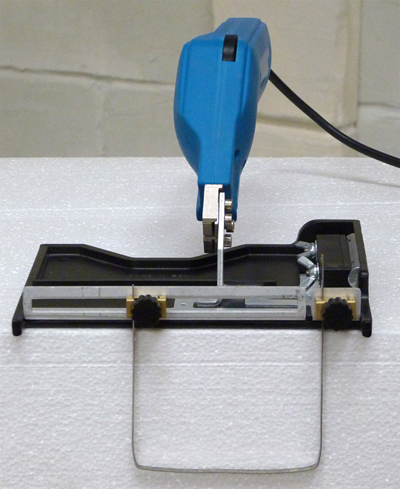

These tools come in many sizes and are basically shapeable hot-wire elements plugged into a power supply or directly into an electrical outlet. They get very hot and create a lot more smoke than their thinner hot-wire counterparts, the bow cutters. These tools provide a different service than the bow cutters. These tools can “dig” into the foam and create spaces and voids in the foam where bows cannot. They are excellent grooving tools for wire and pipe. These tools can also come in handy for slight design work and final touches on a piece before hard coating.
Unlike the bows, they don’t cool down quickly. In less than 5 seconds you can grab a bow wire and not get burned, however, the heavy cutting wires on the routers and groovers stay hot for a long time and can cause severe burns if you pick one up even minutes after the power is cut off. They can also damage property if carelessly placed down while working. If you leave the power on, the element gets so hot that it will glow a bright red. If this happens it can start a fire if set down on a combustible material like paper or wood. It will take a cut or two to get the element back down the regular cutting temperatures.
Stay in a well-vented area and make sure you’re not breathing the fumes. When cutting indoors please wear a respirator. Here is a link to information provided by Hot Wire Foam Factory on EPS fumes: https://gallery.hotwirefoamfactory.com/faqs/faqs-foam/
Drafting out waterways and water weirs are common projects for these tools.
Hot Knives
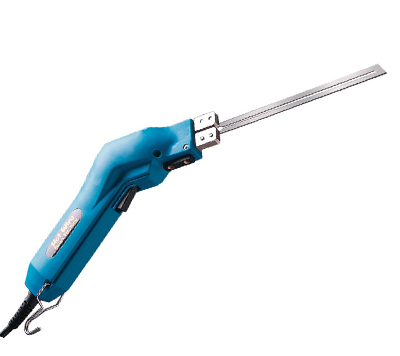

Knives are good for many things and are very useful for intricate cuts and higher detail work. They are used in conjunction with the Sled Guide to make any size grooves or shaped edges that you need. Knives are great but will not be efficient with the bigger cuts. There are also a variety of shapeable wires that can be attached to knife bases for detailed freehand shaping. Knife work is a little slower but allows details to be achieved. Click here for more information about the Industrial Hot Knife Kit.
When Cutting Foam
When cutting a fine line with the knife or making scoops and grooves with routers take in to account the heat of the tool. You might follow a cut line well enough, but if the tool is too hot it will over-melt the foam and your line will become to wide and disappear.
Foam Glue and Foam Fastening
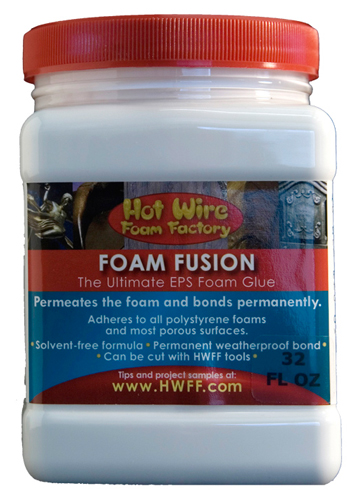
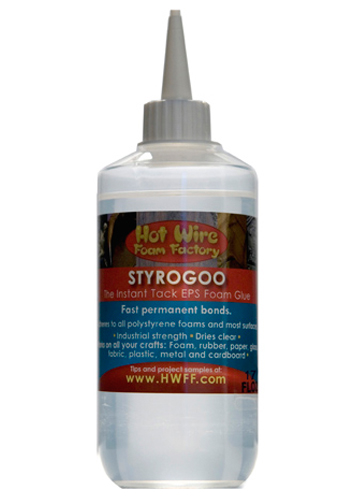
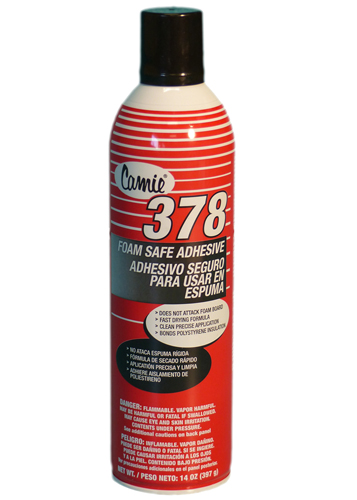
There are many glues for foam available. They are applied to one side or both pieces needing to be put together. They are good products.
I have used the spray glue many times. Just spray a coat on one or both surfaces and wait 3-5 minutes on average until the glue has had a chance to get tack up to a very sticky epoxy-like substance that will harden fast and meld the two pieces together. When dry this bond is ridiculous and will not fail. You can also use 12″ landscaping spikes to hold foam pieces together until your read to glue. Even after your done gluing the foam together you can still use the 12″ spikes to carry the piece around. I have even structure coated right over the piece with the spikes still in the foam. You can remove the spikes anytime but they do make great handles for moving around.
Black Markers
Yah, they are like carpenter’s pencils. You can never have enough of them. But seriously, black markers work best to mark and design foam. They work really well until the foam gets wet. It’s very hard to design with wet foam. Wet foam also is very hard to cut. The water is constantly cooling down the elements or the hot wire, so keep the foam covered if outdoors.
Waste is a Big Issue
It always amazes me how much garbage or scrap can be produced from a single billet of foam. The stuff does not pack very well and the best way to deal with it is to cut it up is small pieces and bag it. If you are on a bigger project (5 – 10+ billets) you may want to get a super sack. These extra-large industrial bags hold a lot of waste and many times the manufacture will take back the scrap on multiple delivers. This will save you waste and dumping fees as they will recycle the foam if its clean. That means no junk, glue, concrete, or other substances that will pollute the recycling process
Other Tools
There are a few tools that I have used over the years that are good to have as well. One is a propane torch or a small sweating torch. I use these to heat up rebar or pipe to burn a channel through foam for wires or water pipes coming up through features. Small saws or hacksaw blades also can be used for small adjustments. Chalk lines for marking longer lines, various levels, and 16 penny nails also work well for temporary marks or pinning down wires. Straight edges and measuring tapes are always being used. Rasping tools are also good to prepare a surface or level out an area.
For the most part that covers the basics that you would need to be efficient.
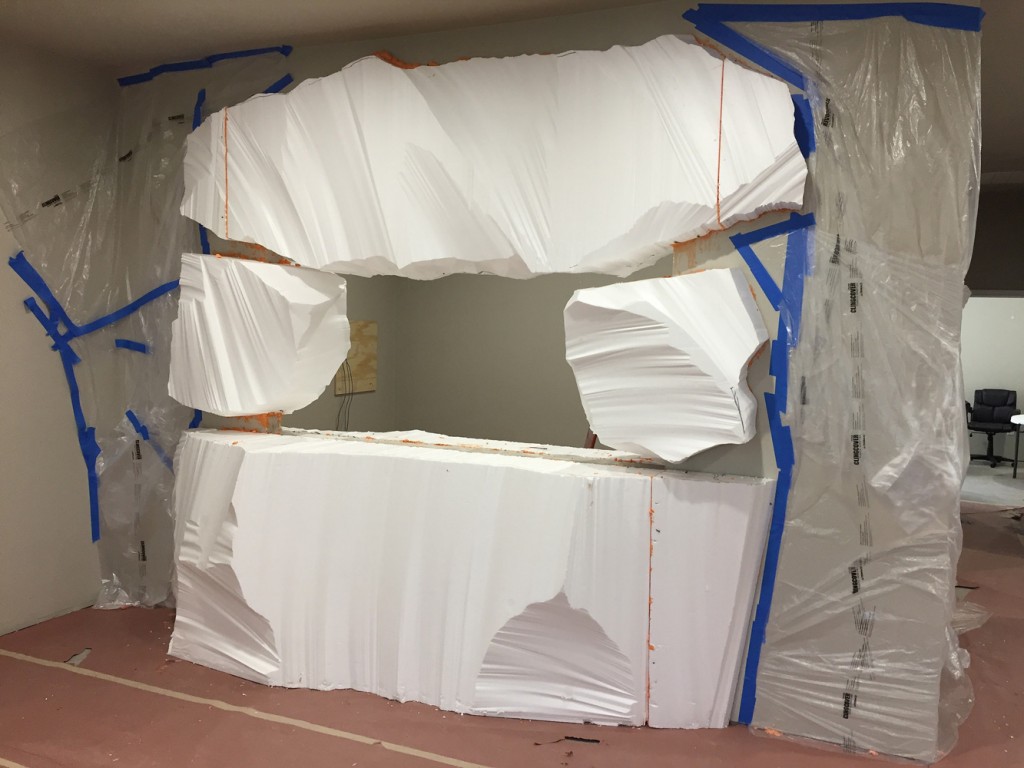
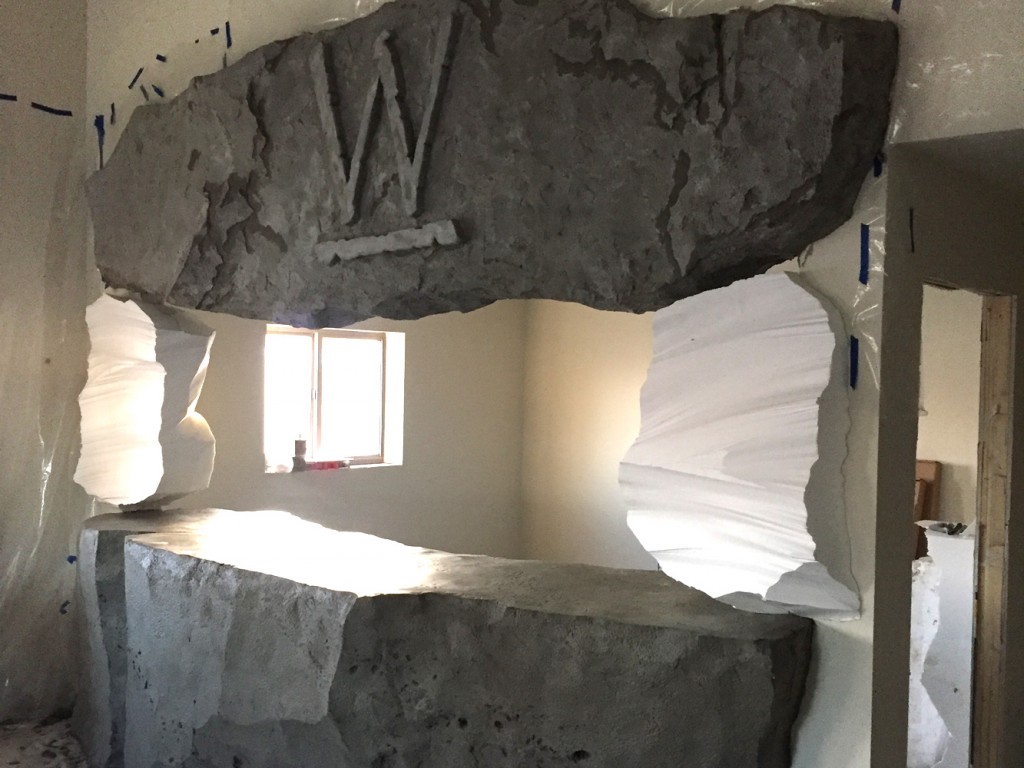

Cement Coatings for Foam Core Construction
Structure coat from Walttools is the only product I use for its reliably and price point. Don’t make the mistake of just putting your vertical concrete mix over foam without this protective and structural coating. One half inch of this material creates a monolithic structure with 12,000 psi of strength and good flexterial properties. The fiber enriched mix guards against cracking and load deflection. Structure coat also provides excellent scratch coat surface when sprayed by mortar sprayers. Once the entire surface is covered you are now ready for your vertical decorative concrete.
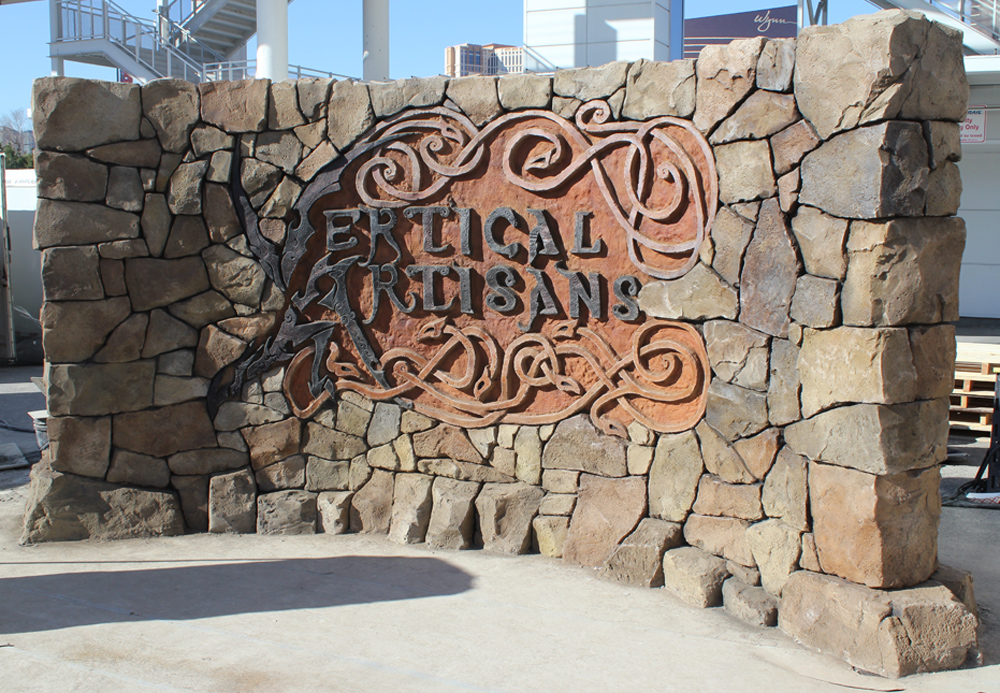
Proper Training
www.VerticalArtisans.com offers training for Vertical Decorative Concrete and Foam Core Construction.
Now You’re Ready
The Vertical Artisans Industrial Tool Kit is a special package of tools offered by Hot Wire Foam Factory that are professional grade and offer excellent durability and service. Feel free to inquire with questions and comments to Nathan@VerticalArtisans.com.

